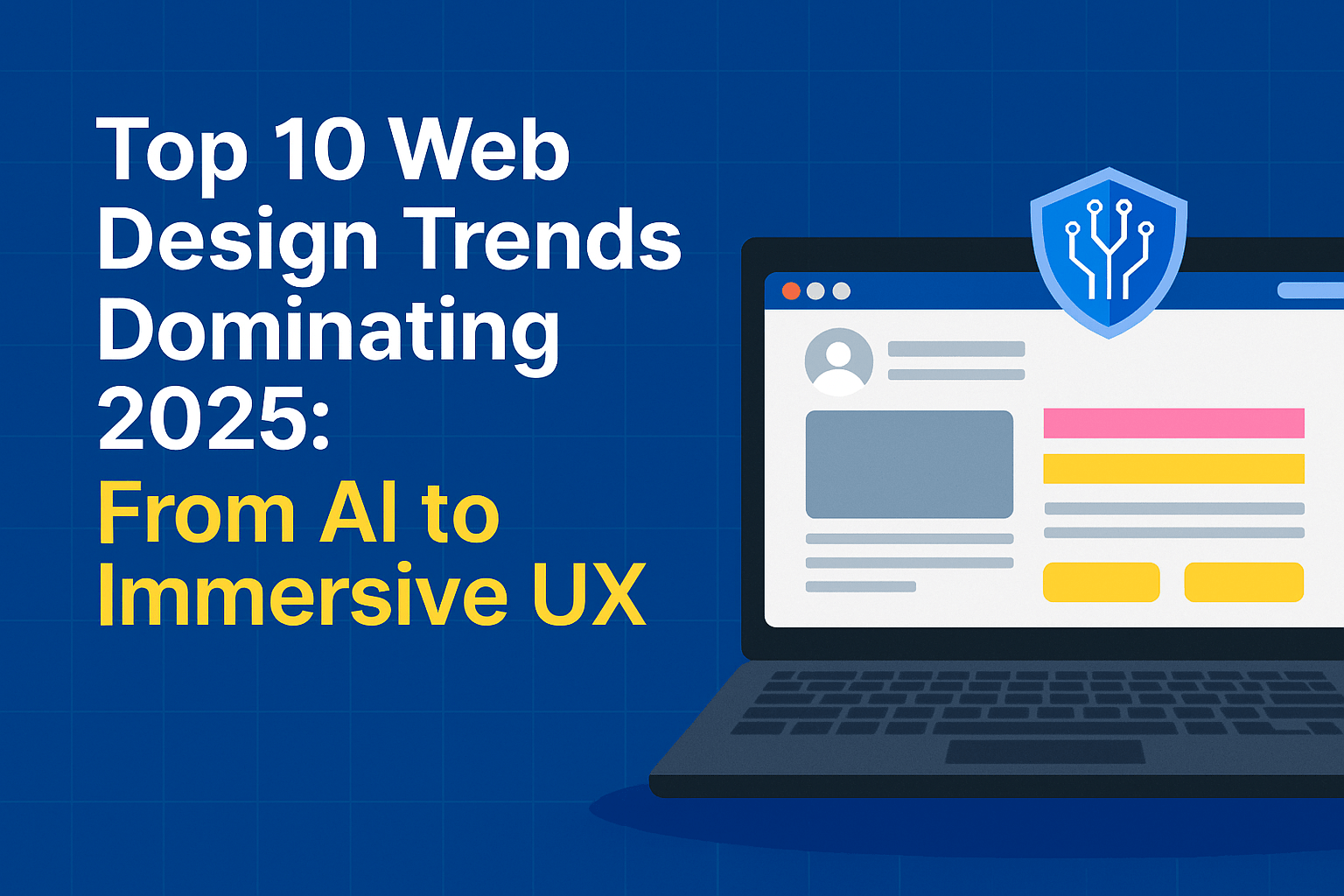Top 10 Web Design Trends Dominating 2025: From AI to Immersive UX

The digital landscape is evolving rapidly, and web design is no exception. Every year brings new trends, tools, and technologies that redefine how websites look, feel, and function. As we step into 2025, businesses, designers, and developers must stay ahead of the curve to ensure their websites remain engaging, efficient, and competitive. This article explores the top 10 web design trends dominating 2025, focusing on AI integration, immersive UX, and cutting-edge technologies shaping the future of online experiences.
1. AI-Powered Web Design
Artificial Intelligence (AI) is no longer a futuristic concept—it’s reshaping web design in 2025. AI-driven tools are a key part of Web Design Trends 2025, automating repetitive tasks like layout creation, color palette selection, and user behavior prediction. Designers can leverage AI to enhance personalization, offering tailored content based on user preferences, browsing history, and real-time interactions.
Why it matters:
AI-powered websites improve user engagement, reduce bounce rates, and optimize conversions by delivering relevant experiences to visitors.
Examples in action:
-
Chatbots for 24/7 customer support
-
AI-driven recommendation engines
-
Automated layout and design suggestions
2. Immersive User Experience (UX)
Immersive UX continues to dominate web design in 2025. The goal is to create websites that engage visitors on multiple levels, combining visuals, animations, and interactivity. Techniques like 3D elements, interactive storytelling, and parallax scrolling keep users engaged longer.
Benefits:
-
Higher user retention
-
Increased time on site
-
Enhanced brand perception
Trend highlights:
-
3D product showcases
-
Interactive infographics
-
Scroll-triggered animations
3. Voice User Interface (VUI) Integration
Voice technology is becoming a critical part of web design. Websites in 2025 are integrating voice commands to enhance accessibility and provide a hands-free browsing experience. Voice search optimization is also a major SEO factor, helping websites rank higher in search engine results.
Key elements:
-
Voice-enabled navigation
-
Conversational AI assistants
-
Voice search-friendly content
SEO impact:
Voice search queries are typically longer and more conversational, which allows designers to optimize content with natural language keywords.
4. Dark Mode and Visual Accessibility
Dark mode isn’t just a trend—it’s a necessity for modern websites. Offering users a dark mode improves readability in low-light environments and reduces eye strain. Additionally, prioritizing accessibility ensures that websites comply with standards like WCAG 2.1, enhancing inclusivity for users with disabilities.
Key features:
-
Toggle between light and dark mode
-
High contrast text for readability
-
Screen reader-friendly navigation
Why it matters:
Accessible design enhances user experience, builds trust, and broadens the audience reach.
5. Micro-Animations and Interactive Elements
Micro-animations are subtle movements that provide visual feedback and enhance usability. In 2025, interactive elements like hover effects, scrolling animations, and animated buttons are becoming standard for engaging web experiences.
Advantages:
-
Guides user attention to key areas
-
Improves overall navigation
-
Adds a dynamic feel to websites
Implementation tips:
-
Use animations sparingly to avoid slowing down load times
-
Prioritize animations for call-to-action buttons
-
Combine with micro-interactions for better engagement
6. Minimalist and Clean Layouts
Simplicity remains a core principle of web design in 2025. Minimalist websites with clean layouts, ample white space, and uncluttered visuals help users focus on content and key messages.
Design strategies:
-
Limit the number of fonts and colors
-
Use negative space strategically
-
Focus on typography and high-quality visuals
SEO benefit:
Clean layouts improve site speed and readability, which are essential factors for search engine ranking.
7. Augmented Reality (AR) Experiences
Augmented Reality is transforming the way users interact with websites. AR integration allows customers to visualize products in real-world environments, enhancing online shopping experiences and decision-making.
Applications:
-
Virtual try-ons for fashion and accessories
-
AR-enabled home decor previews
-
Interactive product demos
Why AR matters:
AR improves engagement, boosts conversions, and differentiates brands from competitors.
8. Advanced Scrolling and Navigation
Traditional scrolling is being replaced by creative navigation solutions. Websites in 2025 incorporate infinite scrolling, horizontal scrolling, and scroll-triggered animations to provide unique and memorable browsing experiences.
Tips for designers:
-
Use sticky navigation menus
-
Implement scroll-based storytelling
-
Ensure smooth and responsive scrolling on all devices
User experience benefit:
Enhanced scrolling methods make websites more interactive, guiding users naturally through content while maintaining engagement.
9. Sustainable and Eco-Friendly Web Design
Sustainability is gaining importance in web design. Optimizing websites for energy efficiency by reducing resource-heavy elements, compressing images, and using eco-friendly hosting solutions is a growing trend in 2025.
How to implement:
-
Optimize media for faster load times
-
Minimize unnecessary scripts
-
Select green hosting providers
Why it matters:
Sustainable web design reduces carbon footprints and aligns brands with growing consumer preferences for environmentally responsible practices.
10. Personalized and Data-Driven Experiences
Websites are increasingly using data to deliver personalized experiences. By analyzing user behavior, preferences, and demographics, designers can create dynamic content that resonates with each visitor.
Implementation methods:
-
Personalized product recommendations
-
Location-based content customization
-
Dynamic landing pages tailored to user profiles
SEO advantage:
Personalized content increases engagement metrics like time on page and click-through rates, which are critical for search engine rankings.
The digital world of 2025 is defined by AI integration, immersive UX, and personalization. From voice interfaces and AR experiences to minimalist designs and sustainable practices, staying ahead of these trends is essential for businesses, designers, and developers. Embracing these web design trends in 2025 not only improves user engagement but also enhances SEO performance, brand reputation, and online conversions.
By adopting these innovations, websites can offer cutting-edge experiences that resonate with users, drive traffic, and achieve business goals in a competitive digital landscape.
